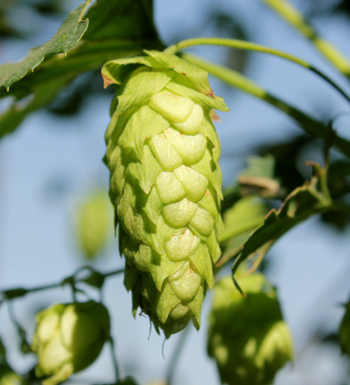Over in the Yakima Valley, the annual hop harvest nears completion. For about three weeks, crews work feverishly around the clock to bring in the crop. It is a noble venture. Each year the Yakima Valley produces about 77 percent of the nation’s hop crop and about 25 percent of the world’s hop crop. It is really something to see. I would know: I was there last week to witness the delicious madness.
Today I want to share some photos with you and maybe even teach you something about the hop harvest. Last week the nice people at Hop Union LLC and Loftus Ranches allowed me to follow some hops from the field to the freezer. That is, from the farm to the hop supplier. In this case, I followed some beautiful Cascade hops from one of Yakima’s revered hop ranches to the coolers at Hop Union, the largest supplier of custom hops to the craft beer industry.
[singlepic id=823 w=275 h= float=none]
While September is the time of year when our brewers make Fresh Hop Ale (aka Wet Hop Ale) and utilize hops that are fresh off the bine, the overwhelming majority of the hop crop is harvested, processed and stored for future use. It is critical that the hops move from the field through processing as quickly as possible to preserve quality. Once processed, hops can be effectively stored at low temperatures for use throughout the coming year. At Hop Union, the goal is to get the hops processed in less than 48 hours.
This is by no means a comprehensive lesson in hop farming. Today we are flying over the hop farm at about 10,000 feet, so to speak. First, understand that hops grow on bines and not vines. There is a difference. Given a vertical line of some sort, hops will climb for the sun. Once they reach the intended height (about 12 feet), they are tied off to horizontal wires. When the hop flowers—often referred to as cones—are ready for harvest the hop farm turns into a big, multi-faceted machine that cuts, separates, dries and bales the hops. In the case of today’s story, the bales are delivered to the hop supplier where they are processed and stored for distribution to breweries.
[singlepic id=814 w=375 h= float=none]
Above, my fellow hop scholars wander through a freshly harvested field. On the left, the remains. On the right, hops just moments away from being harvested.
[singlepic id=824 w=375 h= float=none]
First, a bottom-cutter comes through the row cutting the bines near ground-level (above). The bottom-cutter is followed directly by the top-cutter and the truck into which the cut bines are loaded (below). The whole process moves along at about the same speed you’d walk.
[singlepic id=825 w=375 h= float=none]
Once full, the truck heads off to the farm’s processing facility, which is typically located just minutes away. In this case, it was about a mile from the field. The first stop is the hop harvesting machine. Although they refer to it as a machine, it is more like a big building containing a series of machines. It is like a small factory. It is loud, fast, sharp, remarkably violent and a more than a little bit frightening. Do not try to grab any of the hops whizzing by. It might cost you an arm.
[singlepic id=804 w=375 h= float=none]
First, the machine strips the hops from the bines. A series of processes separate the hop cones from the leaves. The bines and leaves are hauled away and composted.
[singlepic id=810 w=375 h= float=none]
The cones then move via a conveyor belt to the building next door: the hop kiln. The hops are laid out (a few feet deep) in a giant room with a false floor that is a slow-moving conveyor. That is, air can pass through the floor. Giant fans force hot air through the floor and through the hop bed. Typically, hops are dried at about 130 degrees Fahrenheit for about seven to eight hours. The floor is actually a scale, too. It measures the weight to determine the moisture content and adjusts the speed of the floor accordingly. Next, on to the baling room.
[singlepic id=811 w=375 h= float=none]
The dried hops move via conveyor belt to another large building where they are deposited for bailing. A constantly refreshed mountain of hops waits to be baled. Once baled, the hops are loaded onto a truck and (in this case) delivered to Hop Union just a few miles away.
At Hop Union, the bales are unloaded. Samples are taken from each lot of hops and tested onsite in the Hop Union lab. Results are cataloged for each lot. The lab measures alpha levels, cohumulone levels, adhumulone levels, essential oil content and more stuff about which you really don’t need to know. Just understand that brewers geek-out over this stuff. The bales are loaded into the pellet machine which makes more noise and spits out beautiful hop pellets, which actually kind of resemble green rabbit turds. Sorry to plant that imagine your mind but it is the best way to describe hop pellets.
The pellets are vacuum-packed, boxed and sent to cold storage, where they await their destiny.


































